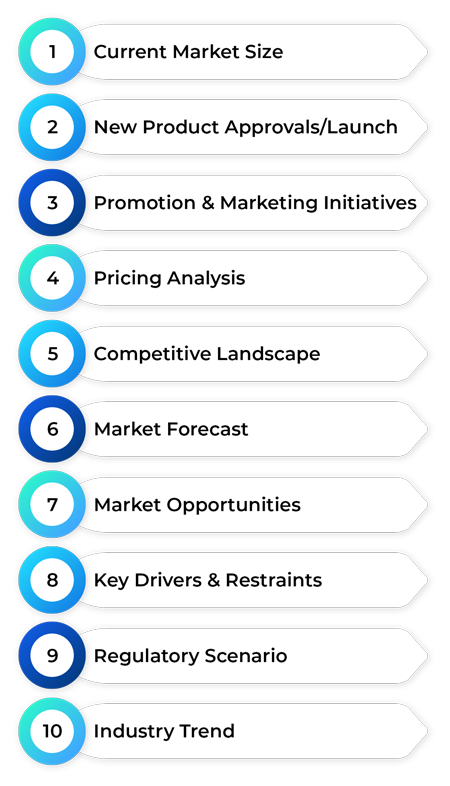 +1 915 229 3004 (U.S.) |
+1 915 229 3004 (U.S.) |  +44 7452 242832 (U.K.)
+44 7452 242832 (U.K.)
 +1 915 229 3004 (U.S.) |
+1 915 229 3004 (U.S.) |  +44 7452 242832 (U.K.)
+44 7452 242832 (U.K.)

Report Scope
The Global Flexible Packaging Market is currently valued at USD 134.95 Billion in 2022 and is anticipated to reach USD 181.29 Billion by 2029, reflecting a Compound Annual Growth Rate (CAGR) of 4.35% over the forecast period.
The Flexible Packaging Market encompasses the production and sale of flexible packaging materials derived from various sources like plastic, paper, aluminum, among others. Its popularity has surged due to its convenient and lightweight attributes, making it an ideal solution for packaging diverse products.
Originating in the early 1900s, flexible packaging experienced significant growth in the 1950s, with technological advancements leading to the creation of more durable, versatile, and cost-effective materials.
Flexible packaging finds applications across various sectors, including food and beverage, pharmaceuticals, personal care products, and pet food. End-users span manufacturers, distributors, and retailers.
The COVID-19 pandemic has had both positive and negative repercussions on the flexible packaging market. Increased demand for packaged goods during lockdowns and social distancing measures has led to a surge in demand. However, supply chain disruptions, labor shortages, and economic uncertainty have presented challenges for manufacturers.
As of February 22, 2023, there have been over 462 million confirmed cases of COVID-19 worldwide, resulting in over 6.06 million deaths, according to the World Health Organization.
Major players in the global Flexible Packaging market include:
By Material Type:
By Design Type:
By Packaging Type:
By Applications:
By Regional & Country Level:
The flexible packaging market generates revenue through the sale of packaging materials to various end-users, dependent on demand, materials used, and individual pricing strategies.
The flexible packaging supply chain comprises raw material suppliers, packaging manufacturers, and end-users, influenced by factors like raw material availability, production costs, and transportation costs.
The value chain for flexible packaging includes design, production, distribution, and sale of packaging materials, each stage adding value to the final product, necessitating a balance between production cost and end-user value.
The flexible packaging market is highly competitive, featuring players ranging from large multinationals to small and medium-sized enterprises.
Strategies by Key Market Players:
North America: Driven by major end-use industries, particularly food and beverage, pharmaceuticals, and personal care.
Europe: Significant market driven by large end-use industries, a demand for eco-friendly solutions, and growth in the e-commerce sector.
Asia Pacific: Fastest-growing market fueled by a growing population, rising disposable income, and expanding end-use industries, especially in China, India, and Japan.
The Global Flexible Packaging Market is currently valued at USD 134.95 Billion
A Compound Annual Growth Rate (CAGR) of 4.35% over the forecast per


Research on the market is done by industry professionals who provide personalized insights on the industry structure, market segmentation, Type assessment, competitive landscape (CL), along with penetration, and emerging trends. In addition to years of professional experience in their various fields and sectors, their analysis is largely based on primary interview (60%) and secondary research (40%) as well as years of professional experience. In addition, our researchers forecast the market's direction over the following seven years by examining past trends and the market's current position. Additionally, various trends of segments and categories that are geographically portrayed are studied and estimated using primary and secondary research.
The key level executives (VP, CEO, Marketing Directors, and Business Development Managers) of the major industry participants who are active and prominent as well as mid-scale businesses operating in this market were interviewed in-depth for this supply-side report by overall Global Market Research.
Extensive primary research was conducted to gain a deeper grasp of the market and industry. Both primary and secondary research, as well as years of pertinent professional experience, are used to support the analysis. By analyzing past and present market patterns, our experts were able to forecast the market's course over the following seven years. For the geographically offered categories in the list of market tables, it differs per category. In connection with the Global Market research report, we also conducted a number of primary interviews with senior level executives (VP, CEO's, Directors, Marketing Directors, Business Development Managers, CFOs, Technical Consultants, Key Opinion Leaders, Industry Experts, Decision Matrix Authorities, and other crucial individuals) of the key industry players who dominated the Global market.
The primary purpose of secondary research was to gather, identify, and validate the information necessary for the thorough, technical, market-focused, and commercial analysis of the global market. With the use of this study, it was also possible to classify and segment the market in accordance with market trends, geographic markets, and regional considerations linked to market type. Analysts have gathered data in the Distribution Channel for the study of the market from reliable sources including annual reports, journals, white papers, corporate presentations, company websites, international organizations of Energy and Power manufacturers, credible paid databases, and many others to gather reliable intel.
Both top-down and bottom-up methodologies were employed to assess the accuracy of the global market size. The market for as a whole was estimated using these methods for a number of different dependent submarkets. Secondary research was used to address the major industry players, and primary and secondary research was used to calculate their market shares in the various regions. This complete intellectual process includes reading the annual and financial reports of the top market participants and conducting in-depth interviews with top industry executives (VP, CEO, Marketing Directors, and Business Development Managers) to gain important industry insights.
Through reliable secondary sources and validated primary sources, the classification of the global markets and their geographic percentage splits were established. To obtain the final qualitative and quantitative data, all relevant variables that might have an impact on the market under investigation have been taken into consideration, inspected in great depth, verified through primary research, and assessed. This information was collected, added to, and thoroughly examined by professional analysts before being provided in this report. The process used to estimate the overall market size for this study is depicted in the following image as an example.


Report Code :
RL65592
Published on :
Upcoming
Request a Free Sample Report